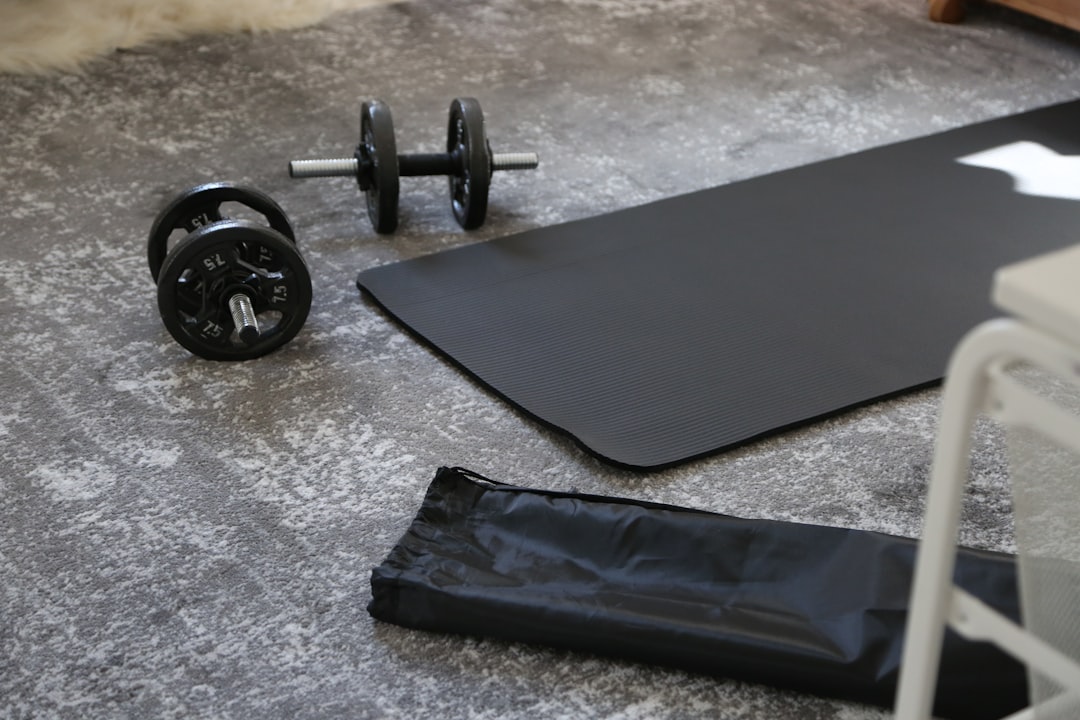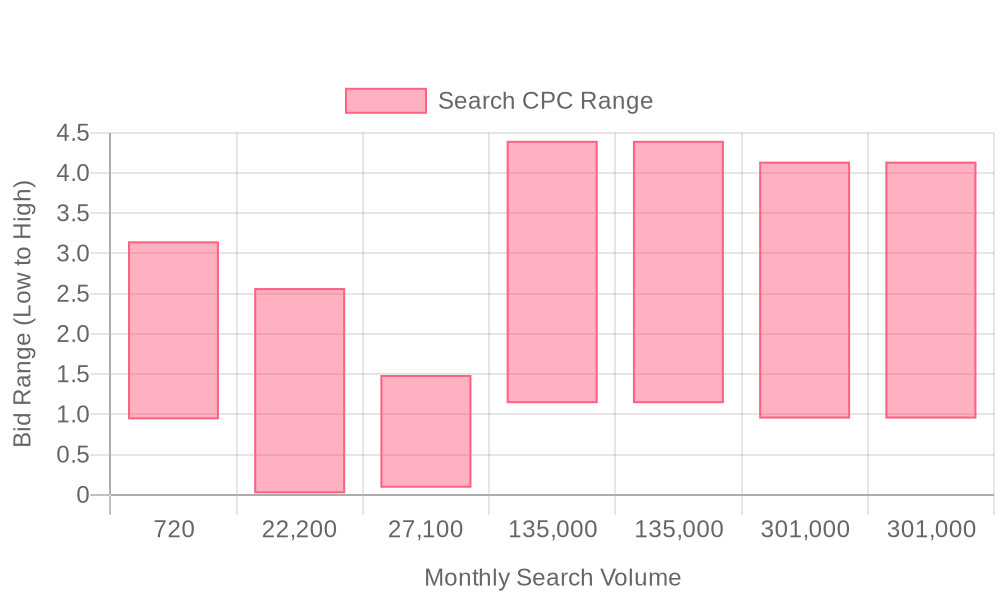
Supercharge your lead generation with a FREE Google Ads audit - no strings attached! See how you can generate more and higher quality leads
Get My Free Google Ads AuditFree consultation

No commitment
Supercharge your lead generation with a FREE Google Ads audit - no strings attached! See how you can generate more and higher quality leads
Get My Free Google Ads AuditFree consultation

No commitment
In today's competitive landscape, home centers face the challenge of effectively attracting high-value customers amid vast amounts of data and online noise. The inability to track high-intent prospects and timely engage them can lead to missed opportunities, leaving room for competitors to step in. Leveraging strategic online advertising, particularly through Google Ads, allows home centers to bridge these gaps, capturing potential buyers exactly when they search for home improvement solutions. By targeting specific search queries and tailoring campaigns to a specialized audience, home centers can engage high-intent prospects, measure ROI more accurately, and convert digital interest into in-store purchases. This guide provides an in-depth examination of setting up successful Google Ads campaigns for home centers, illustrating how this powerful tool can be seamlessly integrated into your overarching marketing strategy.

A high-performing Google Ads strategy for home centers depends on capturing real buying intent at the moment it emerges. Many home improvement retailers miss out on prime leads because CRM records lag behind digital touchpoints, causing revenue teams to act after prospects have moved on. Efficient Google Ads for Home Centers starts with a unified approach: identify, engage, and convert high-value prospects before your competitors do by leveraging intent signals and identification technology.
This guide provides a comprehensive framework for integrating Google Ads into your home center marketing engine. You will learn how to use precise keyword targeting, audience segmentation, and CRM synchronization to move beyond generic PPC for home centers. For actionable insights on aligning creative assets, landing pages, and performance insights, review our marketing analytics blog.
Home centers succeed with Google Ads when keyword lists reflect the real-world needs and search habits of homeowners and contractors. Instead of settling for broad terms, research should identify long-tail keywords such as “home improvement supplies near me,” “deck building kits,” or “plumbing parts for old homes.” Segment keywords by project type and urgency, which helps filter out low-intent browsers and prioritize in-market buyers. With advanced visitor identification, you can pinpoint which keywords are attracting not just clicks, but actual qualified prospects—enabling smarter budget allocation and more relevant ad copy. For a broader overview of effective strategies, explore this Google Ads guide for home improvement stores.
Effective digital marketing for home centers requires audiences that update dynamically as leads progress through the funnel. Segment your audience into DIY homeowners, renovation professionals, and property managers. Use location targeting to focus on service areas within driving distance of your stores, increasing the odds of converting online searches into in-store visits. By syncing real-time audience segments with Google Ads, you ensure that every new lead or customer is instantly available for retargeting or exclusion—minimizing wasted impressions and duplicative outreach.
The home improvement buying journey is visual and detail-oriented. Ads should highlight inventory availability, store expertise, and time-sensitive offers. Every ad group should link to a landing page that matches user intent: for example, “tile installation specials” ads should land on a page featuring before-and-after project photos, testimonials, and a simple form or click-to-call option. Learn how to optimize PPC campaigns for hardware store websites to increase conversions and ROI.
Accurate online and offline conversion tracking is crucial for home center advertising. Use tracking tools to capture form fills, phone calls, and even in-store purchases attributed to digital campaigns. Combining conversion tracking with CRM insights reveals which campaigns generate the highest-value leads, allowing you to adjust bids and creative in real time. As customer interactions flow into your unified database, you can refine your audience segments, create lookalike audiences of top-performing buyers, and shift budget toward the channels and keywords delivering the strongest ROI.
Google Ads for home centers achieves its full potential when paired with coordinated follow-up sequences. Syncing CRM and Google Ads data makes it possible to trigger timely nurture emails or sales outreach as soon as a lead engages with your ad or landing page. Automated workflows ensure that high-intent prospects receive relevant touchpoints—such as special offers or reminders—across channels. Discover proven strategies for driving high-impact campaigns with first-party intent signals.
This structured approach to Google Ads for Home Centers enables revenue teams to unify their digital marketing efforts, capture more qualified home improvement leads, and achieve measurable improvements in sales performance. By leveraging real-time intent signals, CRM synchronization, and continuous creative optimization, your home center can turn every online interaction into a growth opportunity—get started for free with Sona.

Home centers benefit from a digital landscape where intent-based marketing can precisely capture homeowners and DIY enthusiasts at the moment they search for renovation guidance or product solutions. Google Ads enables these retailers to intercept high-value prospects while interest and urgency are at their peak, increasing the likelihood of immediate engagement and purchase.
Unlike broad awareness channels, Google Ads attracts customers entering pivotal project phases, such as kitchen remodels or major repairs, ensuring that leads do not cool off before an offer is made. By reaching these prospects with timely, relevant messaging, home centers can secure new business before competitors have the chance to respond. Explore additional strategies in our marketing analytics blog.
Rapid response is critical during urgent home improvement scenarios. Google Ads empowers home centers to deliver immediate outreach, positioning their services as the fastest and most convenient solution for customers needing same-day supplies or last-minute expert support. This speed-to-market is crucial for capturing leads whose purchase intent is tied to specific project deadlines. For home centers looking to transform their sales funnel, Sona identification reveals which companies and people are visiting your website—even if they don’t fill out a form.
Strategic targeting with Google Ads goes beyond traditional methods, letting home centers expand their reach into emerging markets and demographic segments that are actively researching home improvement projects. With real-time audience targeting, campaigns can adapt as new homeowner trends emerge, capturing interest from both first-time buyers and seasoned DIYers.
Closed-loop measurement and advanced data integration raise the bar for marketing analytics in this sector. Home centers that unify ad performance, lead tracking, and sales outcomes gain actionable insights that empower their sales teams to prioritize high-intent opportunities and accelerate deal closures. When visitor-level data is synced directly into sales workflows, teams can follow up with precision, resulting in higher close rates and maximized revenue from Google Ads investments. Ready to level up your marketing performance? Get started for free with Sona.

Growth for home centers hinges on precision in identifying untapped market segments and aligning digital strategy with real-world buyer needs. Modern revenue teams leverage advanced analytics and unified data to surface actionable opportunities and tailor campaigns for maximum relevance at every stage of the funnel. For the latest thinking on analytics-driven marketing, visit the Sona blog.

Precise audience segmentation is foundational for maximizing every advertising dollar spent in the home improvement sector. By grouping prospects based on their renovation needs, DIY interests, or project timelines, home centers can focus efforts where buyer intent is highest and conversion rates are most promising. Segmentation enables marketing teams to deliver personalized messaging, display relevant offers, and eliminate wasted spend on low-probability audiences.
Through robust segmentation, intent-driven targeting, and real-time CRM integration, home centers can transform digital engagement into qualified leads and measurable sales growth. To accelerate your results, get started for free with Sona.

| Industry | Keyword | Monthly Search Volume | Competition Level | Low Bid | High Bid |
| Home Centers | the appliance center | 720 | MEDIUM | 0.94 | 3.15 |
| Home Centers | home centers | 22200 | LOW | 0.02 | 2.57 |
| Home Centers | home depot garden center | 27100 | HIGH | 0.09 | 1.49 |
| Home Centers | appliance stores | 135000 | MEDIUM | 1.14 | 4.4 |
| Home Centers | home appliance stores | 135000 | MEDIUM | 1.14 | 4.4 |
| Home Centers | appliance stores near me | 301000 | MEDIUM | 0.95 | 4.14 |
| Home Centers | home appliance stores near me | 301000 | MEDIUM | 0.95 | 4.14 |
Effective keyword strategy is central to any successful digital marketing campaign for home centers. Prioritizing long-tail keywords such as "local home improvement" and "home renovation services" enables marketers to connect with buyers who are actively seeking specific solutions and are further along in their purchasing journey. For an in-depth look at Google Ads strategies tailored for home improvement businesses, review this overview of effective Google Ads strategies. These terms reflect a strong intent to act, ensuring that ad spend is directed toward prospects with immediate needs, rather than casual browsers.
Sample target phrases like "home centers near me" and "professional home improvement services" are critical for driving local engagement and capturing service-oriented traffic. These keywords align with how customers search for home improvement providers, especially when convenience and proximity are decisive factors. By leveraging real-time audience targeting, campaigns can focus on high-value local leads who are ready to visit a store or book a service, maximizing return on investment.
Negative keywords play a strategic role in refining this approach. Filtering out terms related to DIY tutorials, job searches, or unrelated home products prevents wasted budget on low-intent clicks. Advanced platforms allow marketers to go further by identifying the actual companies and decision-makers behind website visits, rather than relying solely on anonymous traffic data. This visitor identification, paired with real-time intent signals, ensures that budgets are continuously shifted toward high-converting accounts and that audience lists remain dynamically updated as prospects move through the funnel.
Sophisticated attribution models connect both online and offline conversions to the original keyword and ad interaction, providing a complete view of campaign performance. When CRM and ad platforms are in sync, enriched audiences and qualified leads flow directly into Google Ads and sales systems, enabling more precise retargeting and personalized outreach. To see how you can maximize your own campaigns, get started for free with Sona.
Effective digital marketing for home centers begins with a disciplined approach to keyword selection. By clustering keywords around specific services—such as kitchen renovations, new home builds, or seasonal outdoor projects—marketers can align search intent with high-value customer profiles. This granular approach uncovers pockets of demand, from homeowners seeking immediate repair solutions to contractors looking for bulk discounts. Leveraging advanced tools and unified data, teams can move beyond guessing which terms drive business. Integrated audience data and in-market signals reveal which keywords generate real sales opportunities, enabling marketers to shift budget toward search terms proven to convert.
Combining Google Ads insights with first-party CRM data creates a living keyword strategy. As leads progress through the funnel, dynamic audience updates ensure that only the most relevant segments receive tailored messaging. This not only maximizes budget efficiency but also supports a cycle of continuous improvement. Marketers using unified audience and intent data can capture both immediate needs and nurture longer sales cycles, which is vital for home improvement leads that often span weeks or months.
Crafting compelling ad copy for home centers requires addressing industry pain points directly and offering clear, actionable solutions. Headlines that emphasize urgency—such as “Prevent Project Delays: In-Stock Lumber Ready for Pickup”—speak to both the time-sensitive needs of homeowners and the project-driven schedules of professionals. Descriptions should highlight expertise, fast availability, and customer-centric services, such as in-store consultations, custom orders, or exclusive product lines. By referencing actual user pain points and value propositions, ads achieve higher relevance and click-through rates.
A modern ad strategy also leverages real-time audience insights to tune messaging at scale. When ad platforms are connected to unified sales and marketing data, teams can personalize offers for target accounts or adjust promotions based on shifting local demand. This approach ensures that every impression is a chance to engage high-intent buyers, not just anonymous clicks.
Successful Google Ads for home improvement campaigns depend on seamless alignment between keywords, ads, and landing pages. Each landing page should map directly to the user’s search intent—if a user searches for “bathroom remodel financing,” they should arrive at a page highlighting financing options, testimonials from satisfied clients, and a clear call-to-action for a project estimate. Mobile-first design is essential, as a significant portion of home center advertising traffic originates from smartphones and tablets. Responsive pages with concise copy, fast load times, and easy navigation help reduce bounce rates and increase form submissions.
Marketers who integrate campaign data with web analytics can identify bottlenecks or drop-off points, allowing rapid A/B testing and optimization. By syncing landing page engagement metrics back into ad platforms and CRM systems, teams gain a holistic view of which creative assets and page elements drive conversions. For more on optimizing PPC campaigns for hardware store websites, see this use case on increasing conversions and ROI. This closed-loop approach is particularly valuable for tracking both online and offline conversions, such as in-store visits or phone appointments, giving a true picture of campaign ROI.
Continuous optimization is the backbone of effective PPC for home centers. Smart bidding strategies adjust spend in real time, targeting the audiences and keywords most likely to deliver qualified leads and revenue. By integrating Google Ads data directly with CRM and sales platforms, marketers gain a unified view of customer journeys from initial search to closed sale. This enables granular analysis of which campaigns generate high-value outcomes, not just clicks or impressions.
Advanced conversion tracking unlocks the ability to connect online activity with offline sales—essential for home improvement retailers where many transactions still happen in person. Marketers can attribute revenue to the exact campaign, ad, and keyword that initiated the journey, supporting smarter budget allocation and improved forecasting. As audiences move through the funnel, dynamic audience syncing ensures that remarketing, upsell, and cross-sell campaigns remain precisely targeted, keeping the brand top of mind until purchase and beyond. This data-driven approach transforms digital marketing for home centers into a scalable, predictable growth engine. Get started for free with Sona.

Expanding your home center’s presence demands a unified approach to content marketing and digital advertising, blending educational value with strategic targeting. By leveraging advanced data and campaign orchestration, revenue teams can connect with both in-market buyers and nurture long-term brand affinity. Explore more actionable strategies in our marketing analytics blog.
Google Ads, when executed with precision and purpose, transforms a home center’s ability to capture and nurture customers at pivotal decision points in their buying journey. By bringing together advanced targeting, dynamic audience management, and granular conversion measurement, your campaigns can consistently engage the right buyers and drive measurable sales impact. For an overview of strategies tailored to home improvement stores, see this effective Google Ads strategies resource.
Integrating smart keyword targeting with real-time audience segmentation ensures your ads reach homeowners and contractors actively searching for home improvement solutions. Sophisticated platforms make it possible to identify not just anonymous site visitors but the actual companies and high-intent accounts engaging with your digital assets, allowing you to quickly reallocate budget toward the most promising opportunities.
Data-driven ad optimization, powered by unified go-to-market intelligence, lets marketing and sales teams work from the same insights. As leads move through your funnel, enriched audiences automatically update and sync across Google Ads, CRMs, and sales tools, keeping messaging relevant and maximizing conversion potential. Advanced online and offline attribution clarifies which ads drive true revenue outcomes, empowering you to invest in what delivers results and adjust strategies with confidence.
By weaving these capabilities into your digital marketing for home centers, you move beyond surface-level metrics to orchestrate campaigns that drive both short-term wins and sustained growth. This approach not only attracts high-intent leads but also integrates seamlessly with broader demand generation efforts, giving your home center a durable competitive advantage in an evolving marketplace. To see this in action, get started for free with Sona.
In conclusion, leveraging Google Ads effectively can transform your home center business by attracting more customers and increasing sales. By tailoring advertising strategies specifically to your target audience, you can maximize your reach and impact in a competitive market.
Throughout this article, we explored the unique challenges faced by home centers in digital advertising and discussed practical solutions, including keyword optimization, targeted campaigns, and budget management. These insights are designed to empower you with the tools needed to drive results and enhance your visibility.
Imagine the growth possibilities when you integrate these strategies into your marketing efforts. With a clear plan and the right tools, your home center can not only meet but exceed its sales goals. It's about taking actionable steps towards achieving a more robust online presence and customer engagement.
To truly experience the benefits of a unified approach to marketing data, why not start for free today? By doing so, you'll gain first-hand insight into how our platform can elevate your advertising strategy and deliver actionable results.
Best practices include targeting specific search queries, using precise keyword targeting and audience segmentation, aligning creative assets with landing pages, and implementing conversion tracking and performance optimization.
Optimize by building targeted keyword lists, setting up custom audiences and geo-targeting, aligning creative with user intent, and using real-time data for conversion tracking and performance optimization.
Allocate budget based on targeting high-intent keywords and audiences, ensuring efficient spend by focusing on keywords and demographics most likely to convert into sales.
Yes, use audience segmentation and geo-targeting to focus on demographics like DIY homeowners, renovation professionals, and property managers within specific geographic areas.
Avoid using broad keywords without segmentation, failing to align ads with landing pages, neglecting conversion tracking, and not leveraging real-time data to adjust campaigns.
Join results-focused teams combining Sona Platform automation with advanced Google Ads strategies to scale lead generation

Connect your existing CRM

Free Account Enrichment

No setup fees
No commitment required

Free consultation

Get a custom Google Ads roadmap for your business
Join results-focused teams using Sona Platform automation to activate unified sales and marketing data, maximize ROI on marketing investments, and drive measurable growth

Connect your existing CRM

Free Account Enrichment

No setup fees
No commitment required

Free consultation

Get a custom Google Ads roadmap for your business
Over 500+ auto detailing businesses trust our platform to grow their revenue
Join results-focused teams using Sona Platform automation to activate unified sales and marketing data, maximize ROI on marketing investments, and drive measurable growth

Connect your existing CRM

Free Account Enrichment

No setup fees
No commitment required

Free consultation

Get a custom Google Ads roadmap for your business
Over 500+ auto detailing businesses trust our platform to grow their revenue
Join results-focused teams using Sona Platform automation to activate unified sales and marketing data, maximize ROI on marketing investments, and drive measurable growth

Connect your existing CRM

Free Account Enrichment

No setup fees
No commitment required

Free consultation

Get a custom Google Ads roadmap for your business
Over 500+ auto detailing businesses trust our platform to grow their revenue
Join results-focused teams using Sona Platform automation to activate unified sales and marketing data, maximize ROI on marketing investments, and drive measurable growth

Connect your existing CRM

Free Account Enrichment

No setup fees
No commitment required

Free consultation

Get a custom Google Ads roadmap for your business
Over 500+ auto detailing businesses trust our platform to grow their revenue
Our team of experts can implement your Google Ads campaigns, then show you how Sona helps you manage exceptional campaign performance and sales.
Schedule your FREE 15-minute strategy sessionOur team of experts can help improve your demand generation strategy, and can show you how advanced attribution and data activation can help you realize more opportunities and improve sales performance.
Schedule your FREE 30-minute strategy sessionOur team of experts can help improve your demand generation strategy, and can show you how advanced attribution and data activation can help you realize more opportunities and improve sales performance.
Schedule your FREE 30-minute strategy sessionOur team of experts can help improve your demand generation strategy, and can show you how advanced attribution and data activation can help you realize more opportunities and improve sales performance.
Schedule your FREE 30-minute strategy sessionOur team of experts can help improve your demand generation strategy, and can show you how advanced attribution and data activation can help you realize more opportunities and improve sales performance.
Schedule your FREE 30-minute strategy session





Launch campaigns that generate qualified leads in 30 days or less.
